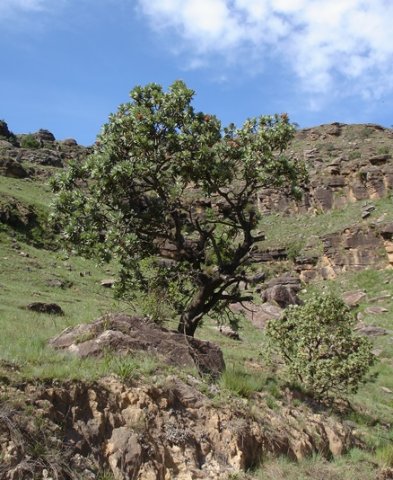Protea roupelliae subsp. roupelliae

Author: Ivan Lätti
Photographer: Judd Kirkel Welwitch
Protea roupelliae subsp. roupelliae, commonly known as the silver sugarbush, is a rounded tree from 3 m to 8 m in height (SA Tree List No. 96). The main stem is short, from 20 cm to 50 cm in diameter and covered in thick, dark grey to black, fissured bark. The crown is rounded, much-branched, the young branches about 1 cm in diameter and hairy only when young.
The subspecies distribution is widespread in the east and northeast of South Africa, from the northeast of the Eastern Cape, the far east of the Free State, KwaZulu-Natal and the provinces north of the Vaal River; also found in eSwatini but probably extinct in Lesotho. The photo was taken in the KwaZulu-Natal Drakensberg.
The habitat is diverse, often grassy slopes at various elevations and sourveld, sometimes forming pure and often localised stands in summer rainfall Protea woodland. The trees are adapted to several soil types, wide-ranging temperatures and elevations from sea level to 2400 m. The habitat population is deemed of least concern early in the twenty first century.
The trees are used for firewood. The plant can be grown from seed, flowering within five years (Coates Palgrave, 2002; Rebelo, 1995; Pooley, 1993; Rourke, 1980; iNaturalist; http://redlist.sanbi.org).

